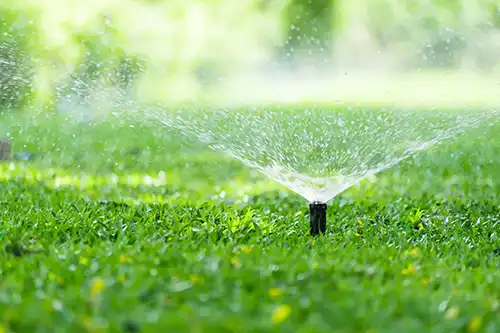How Much Water Does My Lawn Need?
The amount of water your lawn needs can vary depending on factors such as climate, grass type, soil conditions, and time of year. However, a general guideline is to aim for about 1 inch of water per week, including rainfall. Here are a few considerations to help determine the water needs of your lawn:
- Climate: Hotter and drier climates generally require more frequent watering, while cooler and more humid climates may require less. Take into account the natural rainfall patterns in your area when determining how much additional watering your lawn needs.
- Grass type: Different grass species have varying water requirements. Cool-season grasses, such as Kentucky bluegrass and tall fescue, typically need more water than warm-season grasses like Bermuda grass or zoysia grass. Research the specific watering needs of your grass type to ensure you provide the appropriate amount of water.
- Soil conditions: Soil type affects water retention and drainage. Sandy soils drain quickly and may require more frequent watering, while clay soils hold water longer and may need less frequent watering. Conduct a soil test to assess your soil’s moisture-holding capacity and adjust your watering accordingly.
- Time of day: Watering deeply and infrequently encourages deeper root growth and overall healthier lawns. Consider using techniques like deep watering less frequently rather than shallow watering every day, which can lead to shallow root growth and weaker grass.
To determine if you are applying the right amount of water, consider using a rain gauge, moisture meter, or simply placing shallow containers like empty cans around your lawn during irrigation. Measure the water collected in these containers to determine how long you need to water to achieve approximately 1 inch of water per week.

Need Lawn Care? We Can Help.
Click the button below to leave your information & we'll be in touch in an hour or less.
Pest Control Experts You Can Trust
Leave your information below and we’ll be in touch with your FREE quote!
*During normal business hours. After hours inquiries will be returned the next business day.
How to Tell How Much Water Your Lawn Needs
When you’re creating a watering plan from the beginning, we suggest beginning with a weekly goal of 1 inch of water. Don’t forget to take into account any rainfall when programming your irrigation system. After that, keep a close eye on your lawn for a few weeks to observe how it reacts. Here are some additional tips for watering your lawn to ensure optimal results:
- Avoid watering daily: Grass typically thrives with deep and infrequent watering, which encourages roots to grow deeper into the soil and prevents excess moisture. For that reason, try watering your lawn between two and three times per week.
- Look for signs of dehydration: Wilting, long-lasting footprints, and grass blades turning bluish-gray are all signs that your lawn needs more water. If you notice these problems, try increasing the time of each watering session.
- Adjust for weather: Don’t forget to take rainfall into account when setting up your irrigation schedule. If it’s hot and dry, water more frequently to ensure your grass has the moisture it needs. If it’s regularly raining, you may not need to water at all.
- Work with a professional: Watering your grass may seem straightforward, but it isn’t always. Thankfully, you don’t have to navigate it all on your own. A lawn care expert can help you set up the perfect irrigation schedule to keep your grass looking its best.
